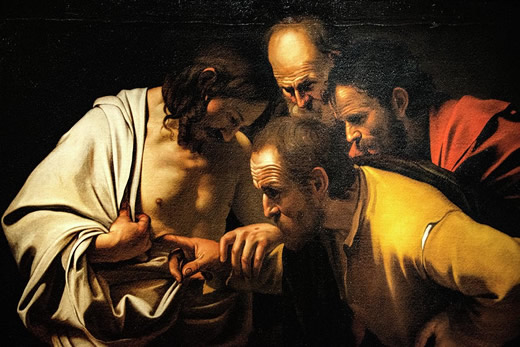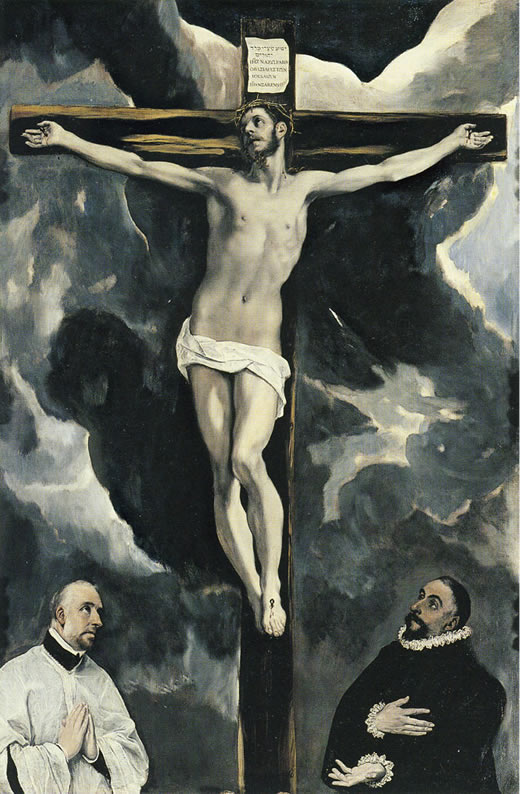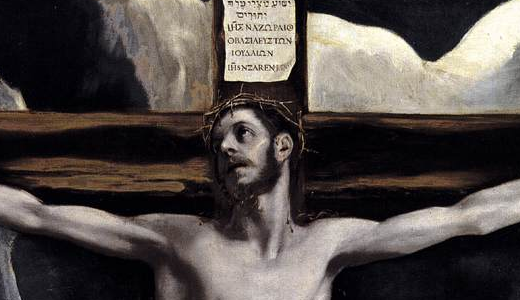I think The Plugged In Show is pretty cool. Sure, I’m a little biased. But even as a participant, it often impacts me the way I hope it does you: It makes me think about media, entertainment and our walk with God a little more deeply.
Take our most recent podcast, which just landed yesterday. We were talking about the new Discovery+ movie Resurrection and, by extension, other movies about Jesus. And it was interesting what some of my fellow podcasters said about how they react to these movies’ crucifixion scenes.
Jonathan McKee said that his favorite movie about Jesus is Mel Gibson’s The Passion of the Christ, in part because of its wince-inducing realism. Emily Clark admitted she’s never finished watching the Passion: It was just too hard.
That conversation was still bouncing around in my brain last night as I started reading (in Terry Glaspey’s excellent 75 Masterpieces Every Christian Should Know) about two towering figures of Renaissance art: Caravaggio and El Greco.
The two painters were roughly contemporaries, living and working around the turn of the 17th century and in the immediate shadow of such greats as Leonardo da Vinci and Michelangelo. But as artists, they were quite different.
Caravaggio was a master of hyper-realism, relishing in every sinewed muscle and every fold of cloth. He was a pretty violent guy, too (most of what we know about him comes from police records), and many of his paintings were kinda grotesque. He may have actually painted two versions of Judith Beheading Holofernes (a story from the deuterocanonical Book of Judith), both of which would make even Jigsaw of the Saw movies turn white (or, rather, whiter). But the painting Glaspey highlighted was The Incredulity of Saint Thomas, where the Bible’s most famous doubter literally sticks a finger in Jesus’ open wound.

If Plugged In was around back in 1602, when the painting was finished, I’m sure it would have something to say about the painting’s CSI realism. Glaspey notes the detail Caravaggio pours into the work, down to Thomas’ dirty fingernails. And Jesus, even post-Resurrection, is no divine apparition here (unlike many other Renaissance depictions of Jesus after the crucifixion), but a man of flesh, blood and wound. This is a Jesus who you can touch and eat with—a miracle draped in humanity.
El Greco could paint realistically, too, as many of his early portraits attest. But he was born in Greece (as his name suggests) and was likely raised in the Greek Orthodox branch of Christianity, not Roman Catholicism, and Orthodoxy was synonymous with artistic tradition. Indeed, he originally trained to be an icon painter—and Greek icons, with their formal, time-honored poses, symbols and rejection of realism, were about as far from the Renaissance as you could get.
When El Greco moved to Toledo, Spain, his artwork went in new—and for the time—crazy directions. Paintings from the 17th and 18th century look almost modern, filled with stylistic flourishes that didn’t reflect nature, but a more intangible truth—presaging expressionism and cubism by centuries. Glaspey notes that while El Greco was fascinated by light, that light often seemed to emanate not from the outside world, but from inside his subjects. And often, those subjects came with an otherworldly flare.
Glaspey points to Christ on the Cross Adored by Two Donors. While the donors are given “realistic fidelity,” Jesus is a different story. Writes Glaspey:
El Greco’s Christ comes across as more of a divine and spiritual being than a human and physical one, as there is only a dainty trace of blood coming from His wounds and a look of quiet resignation upon His face. Rather than trying to capture the realism of the crucifixion, El Greco was pointing toward what it accomplished—that the incarnation brought together the earthly and spiritual realms.

In a way, I think these two paintings illustrate the beautiful paradox of Jesus: In El Greco’s, Jesus’ very human suffering and death becomes a picture of His divinity. In Caravaggio’s, Jesus’ miraculous resurrection becomes a picture of His humanity.
But it also hints at an even greater truth: Jesus meets us all where we can see Him best. For Jonathan McKee, the Caravaggio-like realism of The Passion of the Christ gave him a better understanding of our Savior. I really dig Caravaggio and appreciated the Passion, but at my core I’ve always been more of an El Greco guy, who contemplated the swirling mysteries underneath the skin.
God made us all so different. Is it so unusual to think that He’d find different ways to reach us? Even different expressions in art and entertainment?
It’s something to remember especially this weekend, as we watch and read and contemplate Jesus’ sacrifice and triumph with our families, and perhaps talk about those core fundamentals of the faith with our children. He died for us all. He loves each one of us. And He knows us far better than we know ourselves.







One Response
-Excellent examination of this topic! Yes, I think there is a curiously human beauty in how we portray Christ’s Passion and Resurrection artistically – different aspects of the story resonate more with some people than with others. Personally, I find more appreciation for the different kinds of art at different time in my life; different Holy Weeks bring focus to certain aspects, as the Lord leads, no doubt.
And I’m a huge El Greco fan, so… 🙂